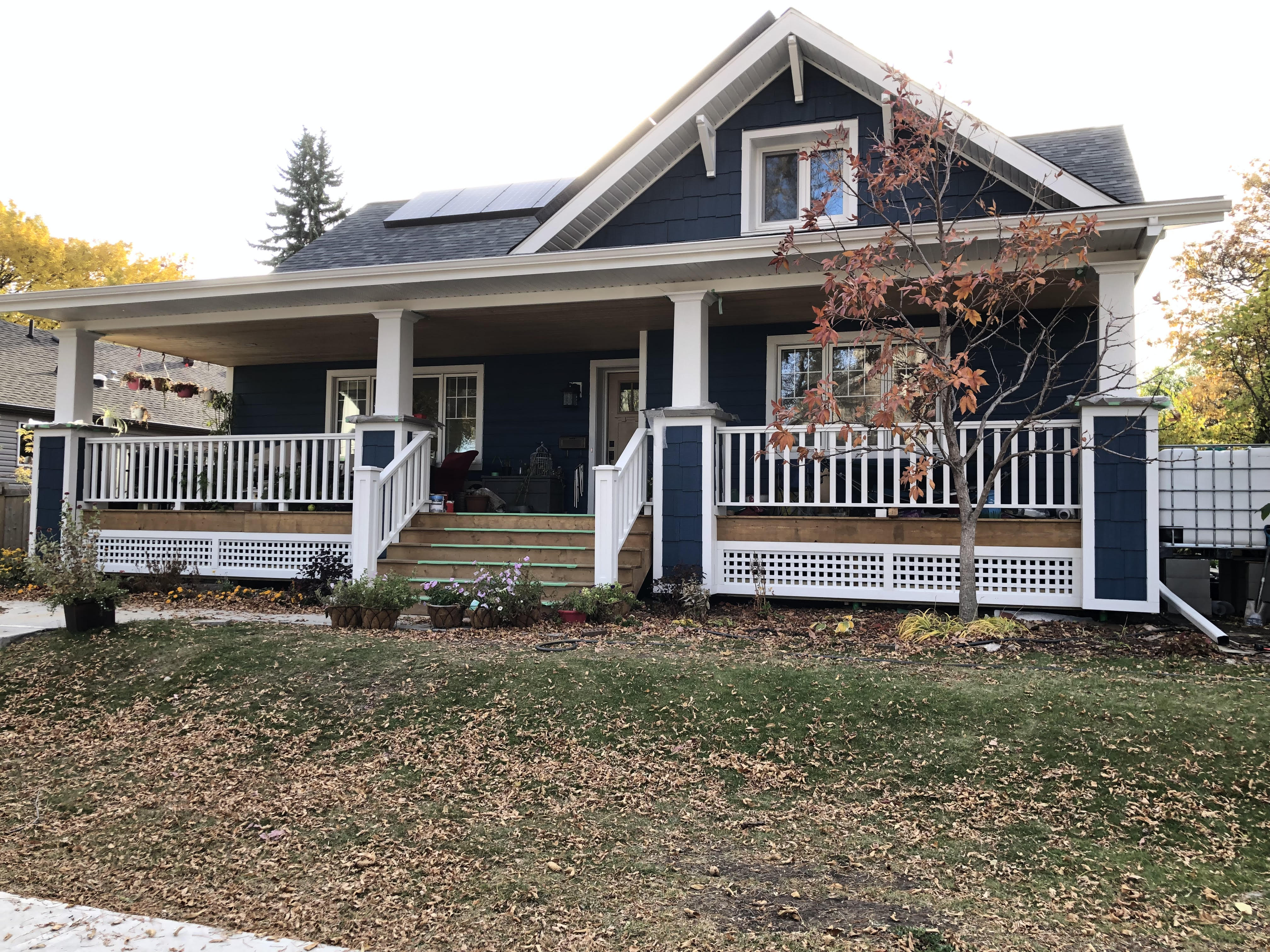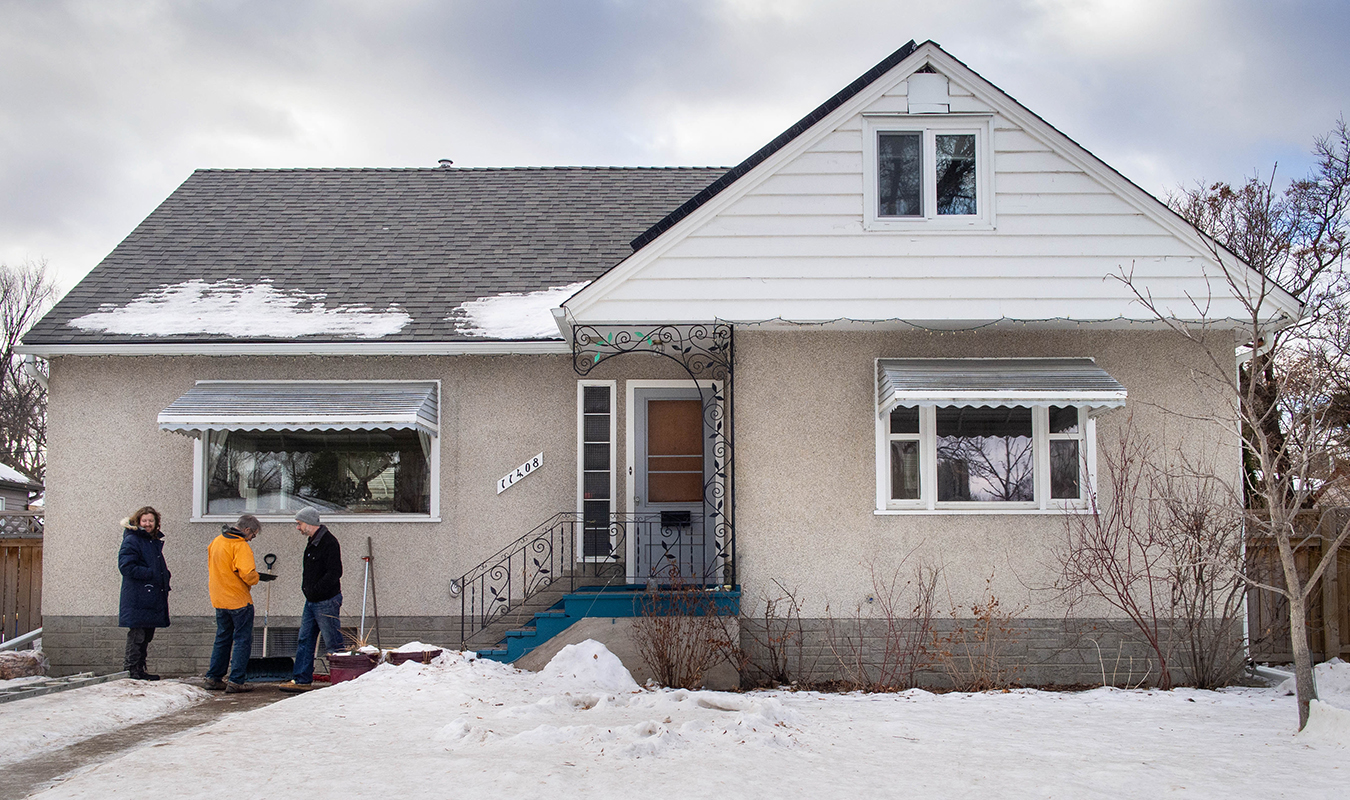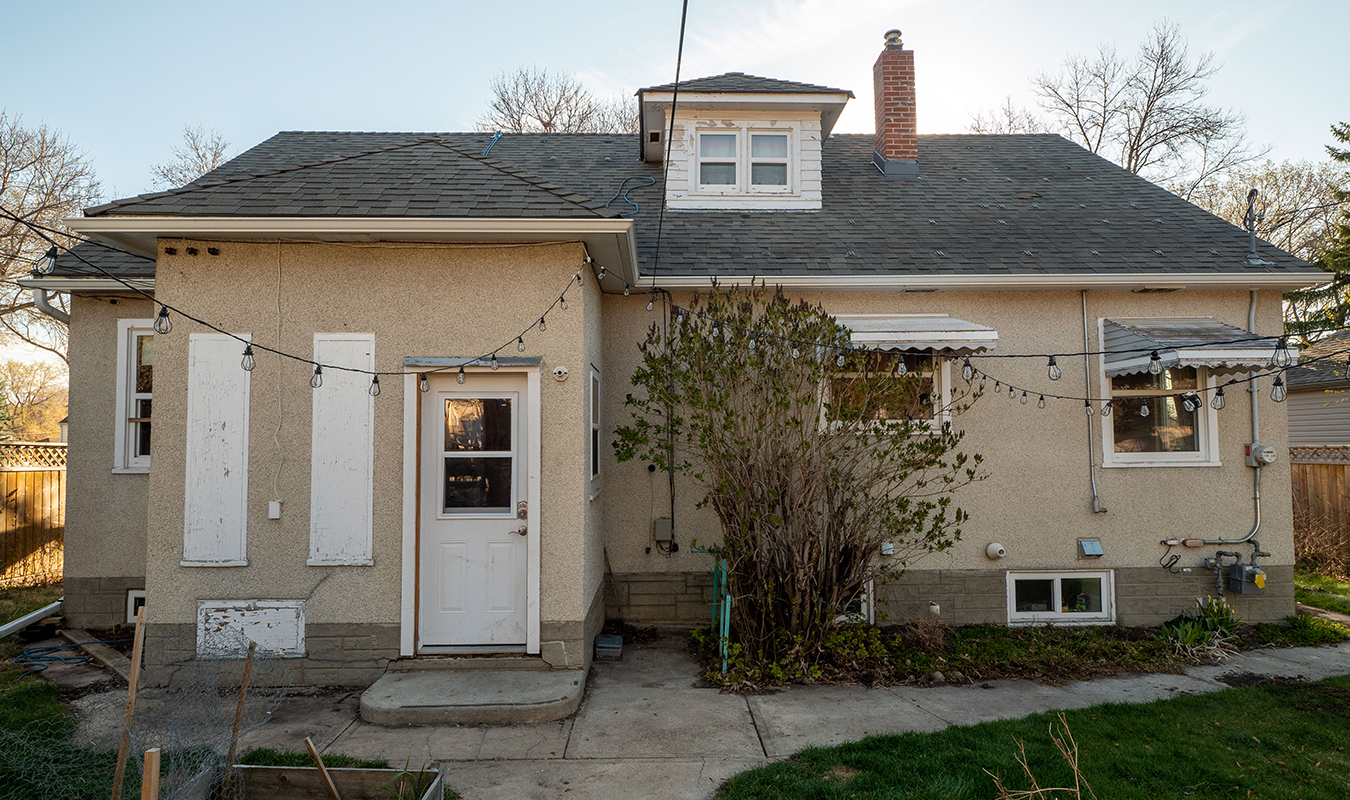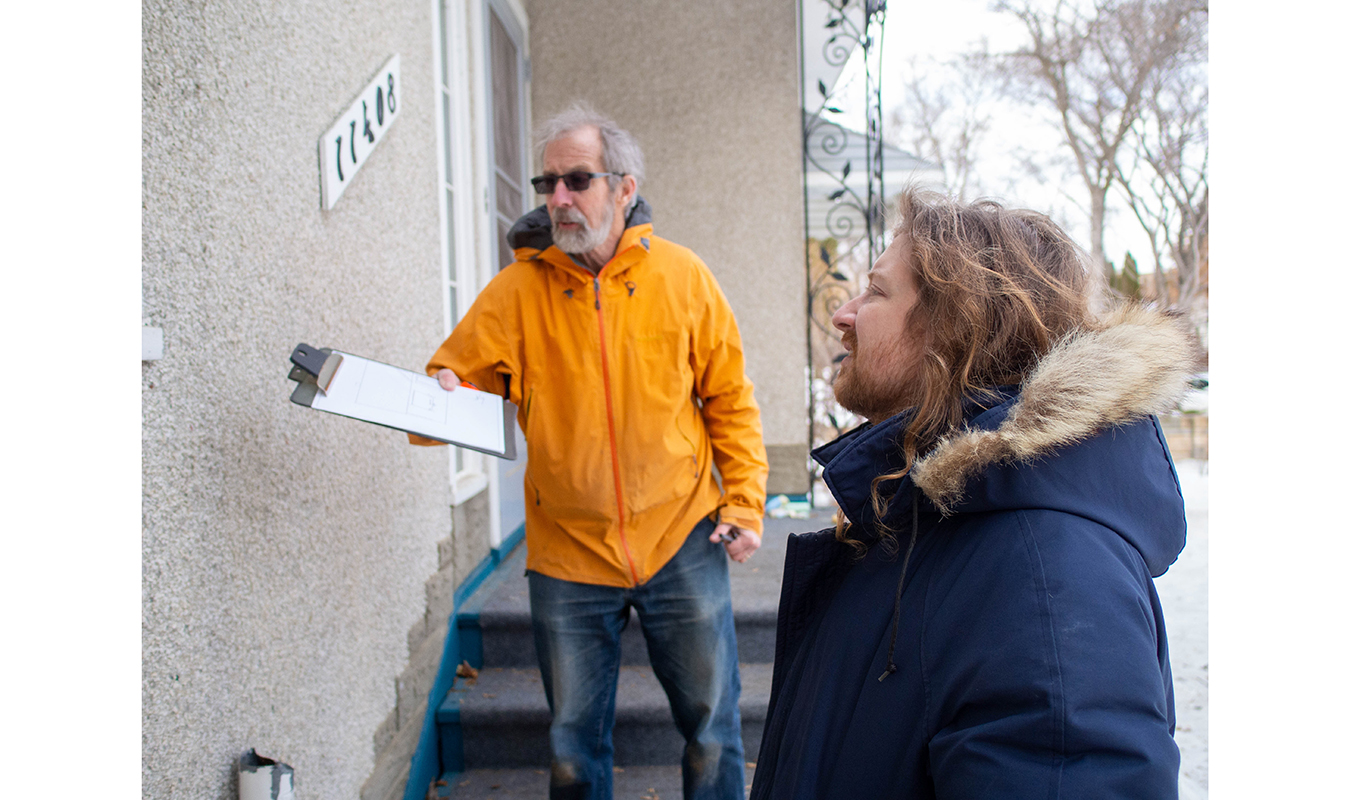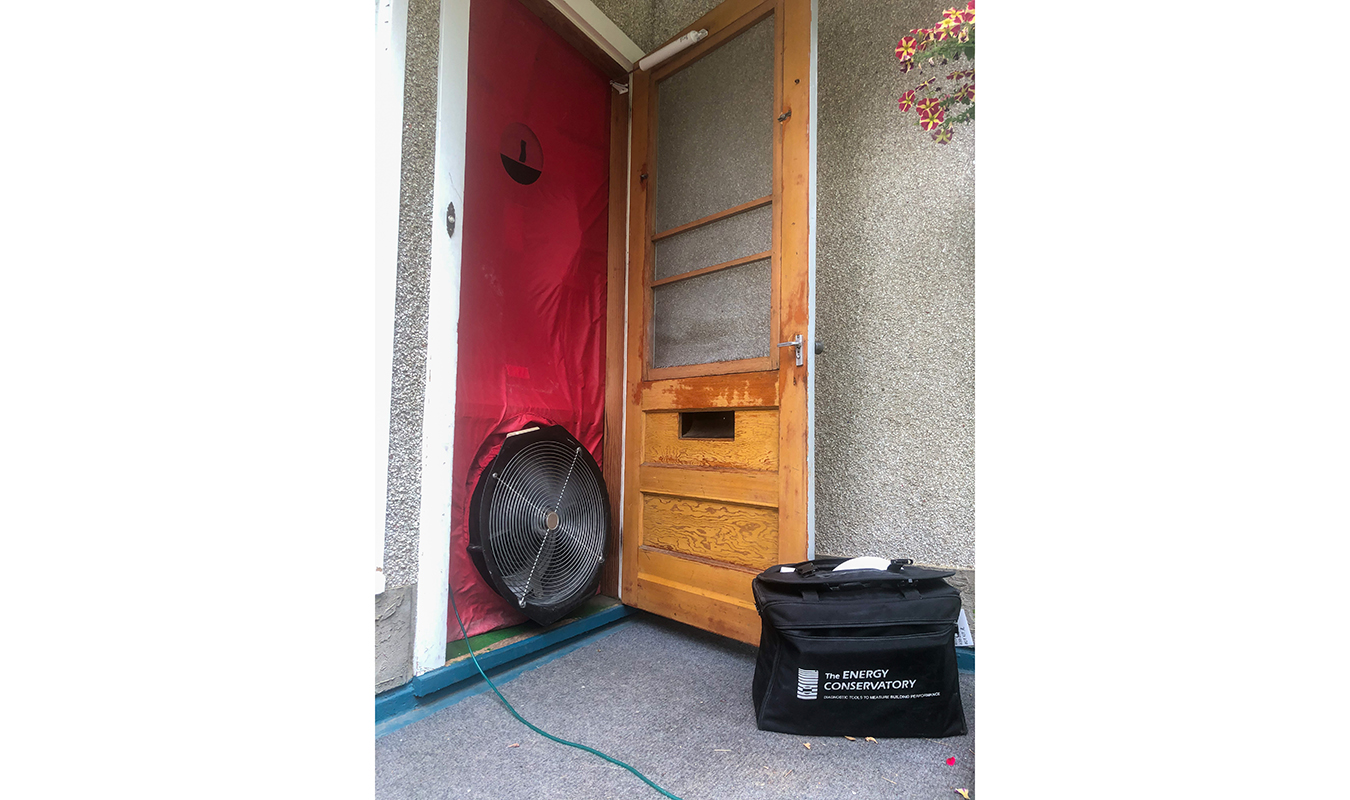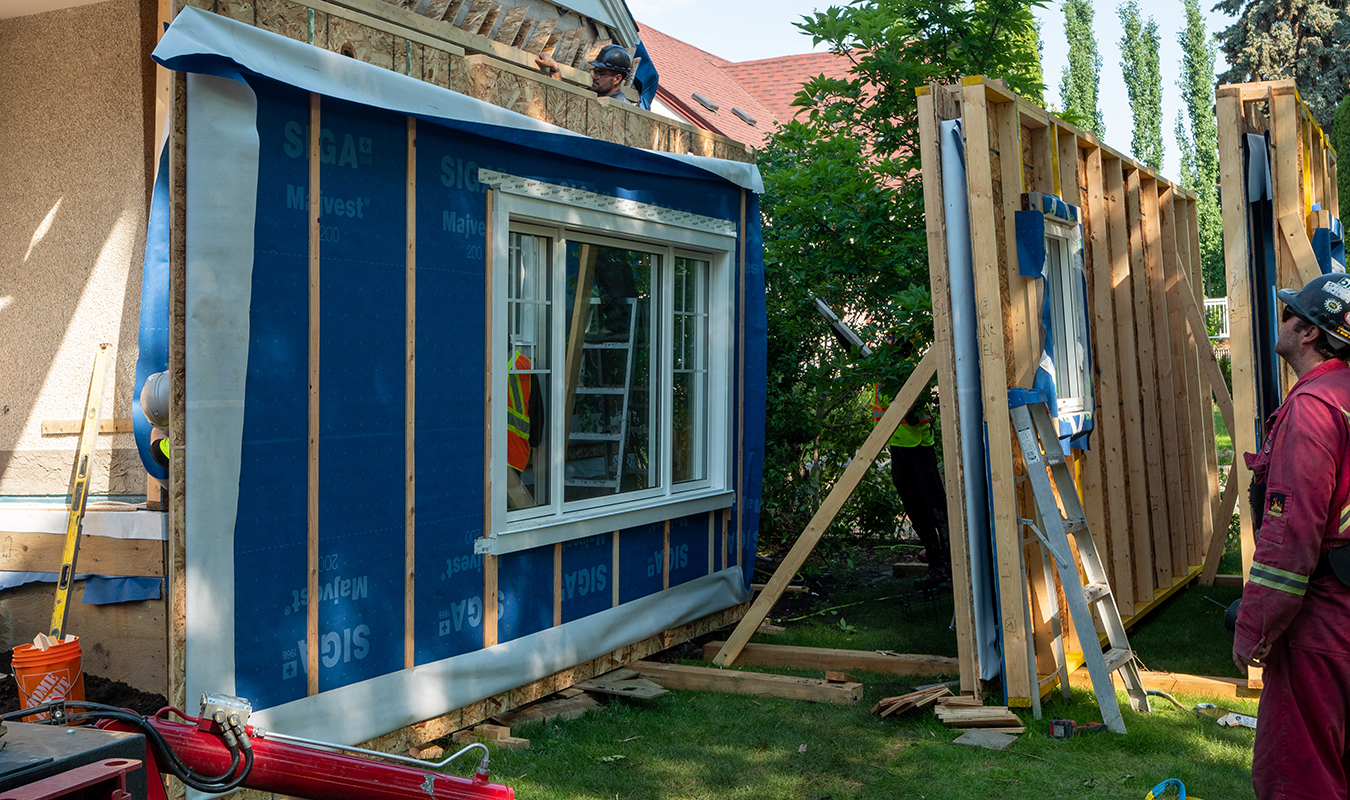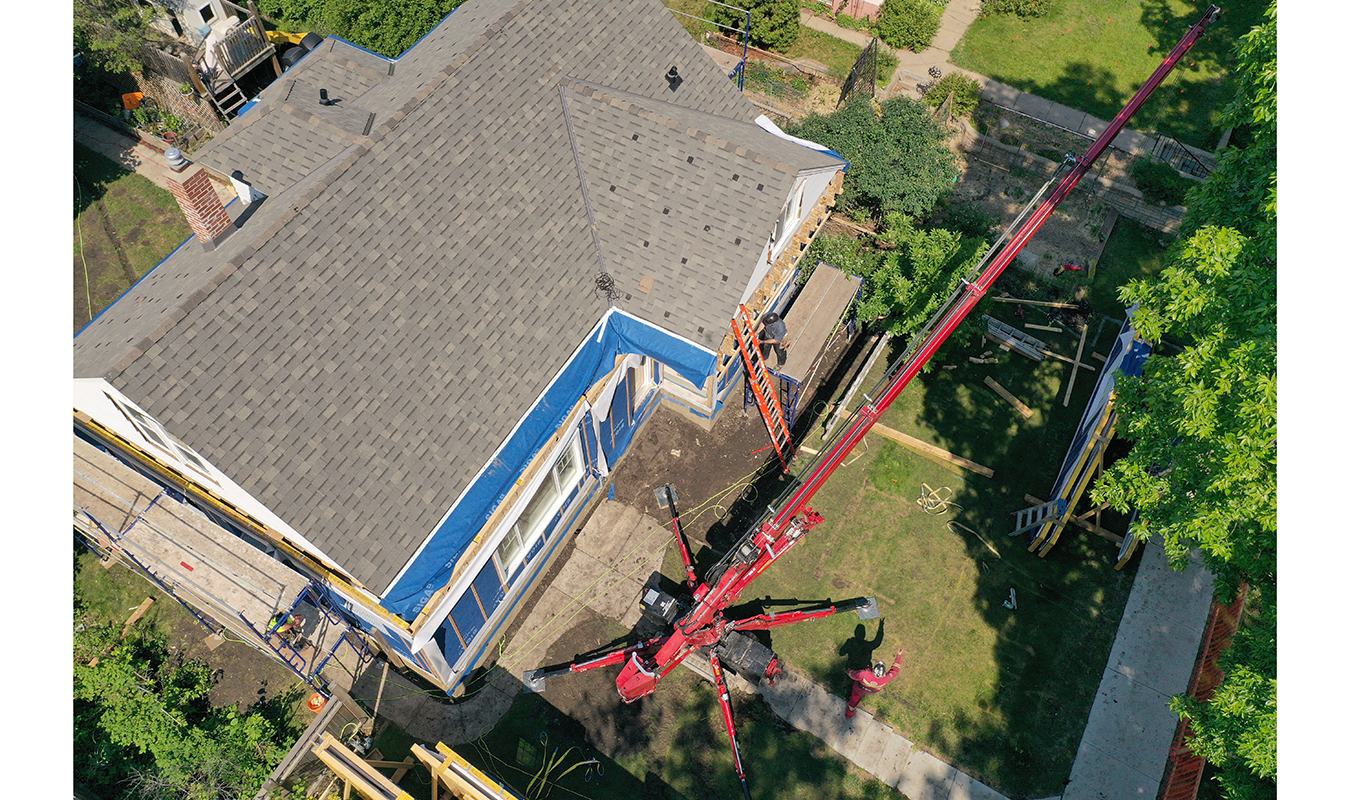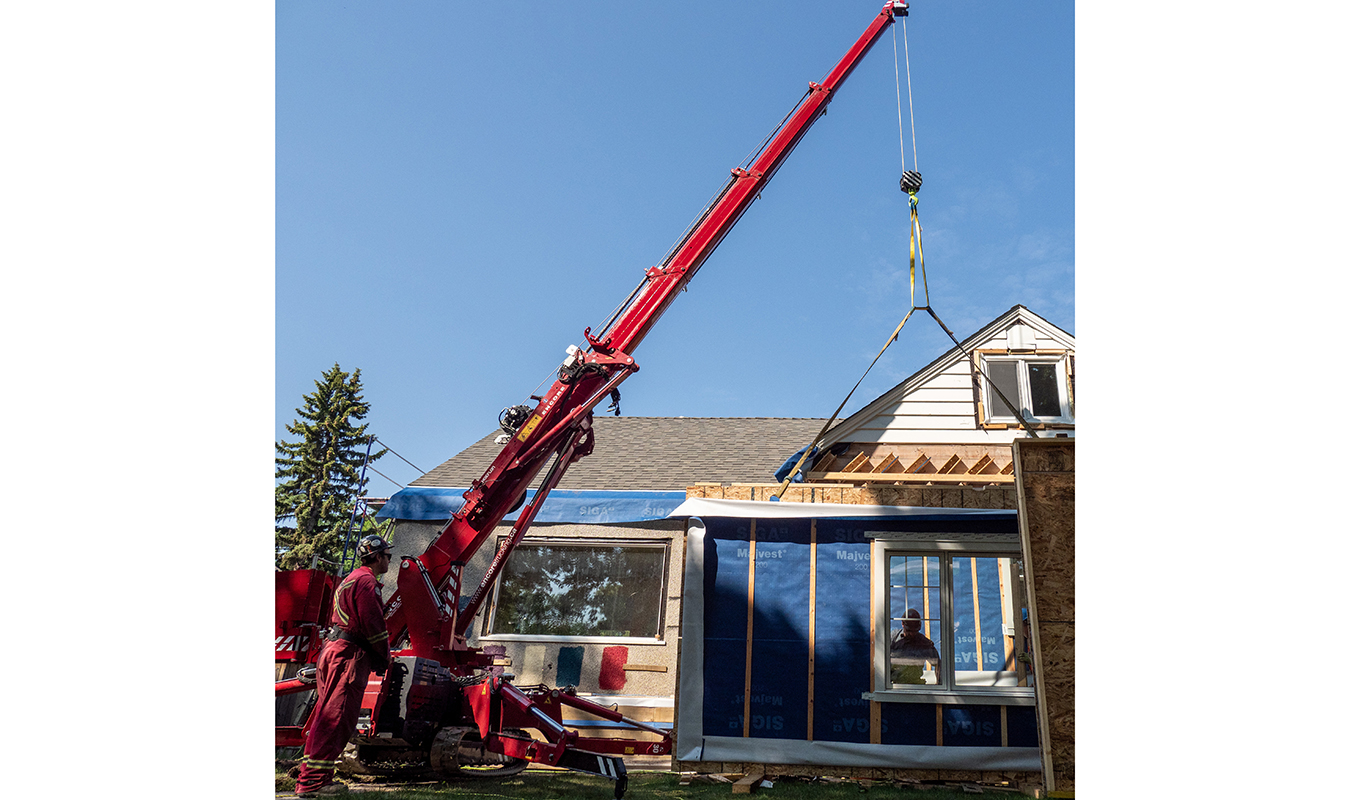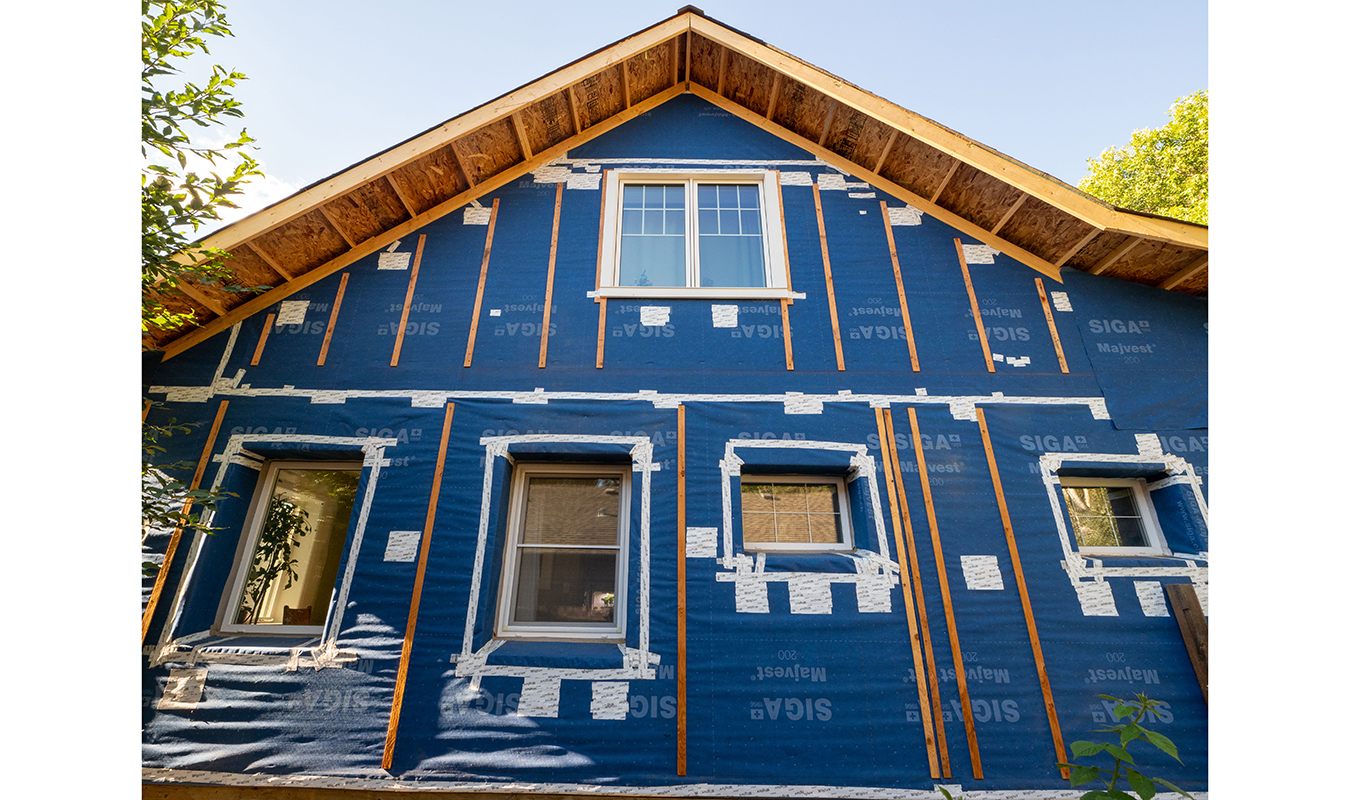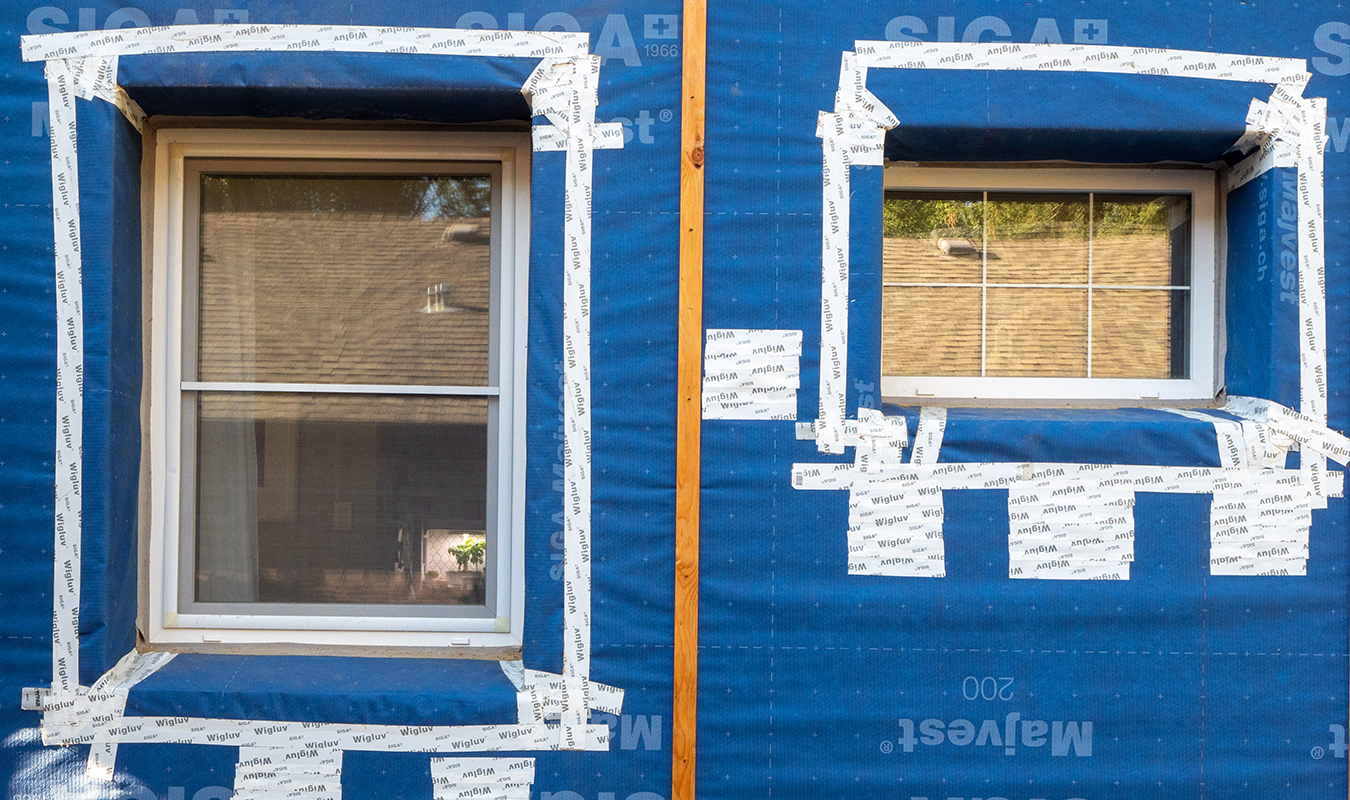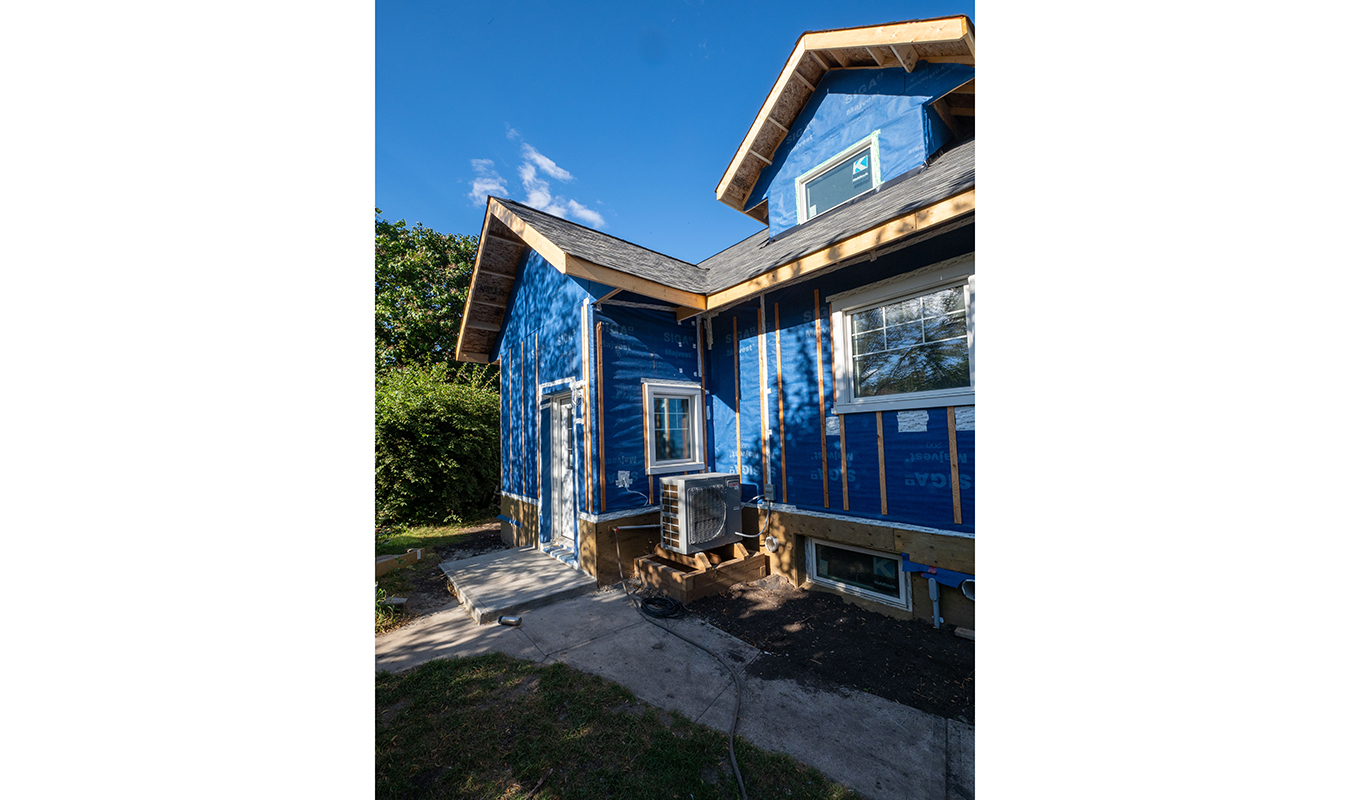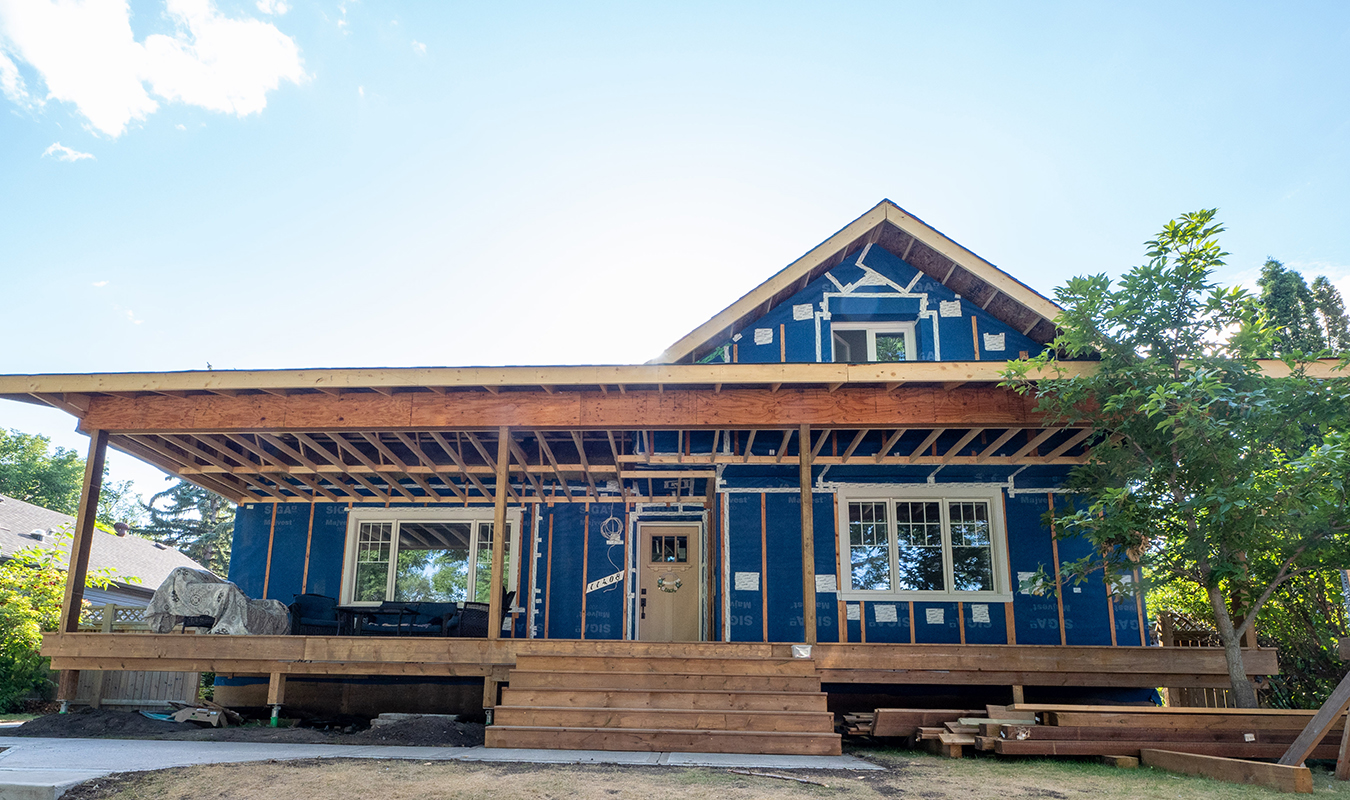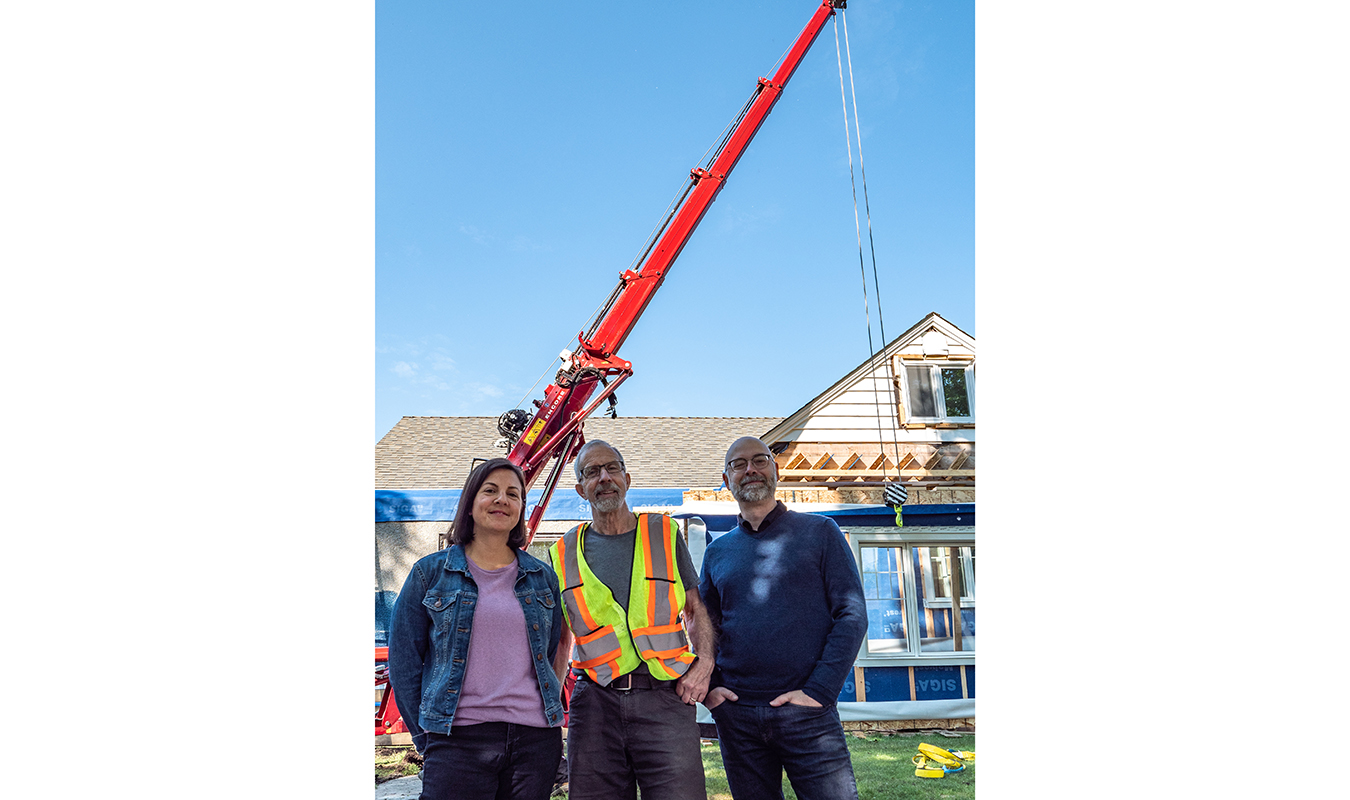Highlands Panelized Deep Retrofit
Jim Sandercock and Melanie Harmsma’s retrofit was the first panelized, Energiesprong-inspired deep retrofit in North America.
| Building Type | Single-Family Bungalow | Location | Edmonton, AB |
| Year Built | 1951 | Foundation Type | Concrete (Full Basement) |
| Structure Type | Wood-Framed | Total Floor Area | 259.2m2 |
| Climate Zone | 7a | Heating Degree Days | 5120 |
| Retrofit Status | Complete | Year Completed | 2023 |
| Retrofit Phasing | No | Geometry Changed | No |
| Annual Energy Savings | 102.89% | Operational Carbon Savings | 9.36 tCO2eq/yt |
| Retrofit Type | Envelope and Mechanical | Performance Level | Net Zero |
Project Team
- Butterwick Projects ( Panel Design & Builder )
- ReNü Engineering
- SSRIA (Research and Development Costs) ( Funder )
Project Priorities
- Reduce Energy Consumption
- Achieve Net Zero or Net Zero Ready
- Increase Thermal Comfort
- Improve Indoor Air Quality
- Reduce GHG Emissions
- Repair and/or Renew Exterior
- Improve Home Value
Upgrades
- Installation of pre-built, airtight, insulated panels (R28) on above grade wall assemblies.
- Installation of 5.5 Inches (R25) of GPS Insulation around the foundation
- Installation of new framed and insulated (R38) roof over existing roof
- Replace poorly performing windows with new triple glazed Low E Argon PVC windows
- Replaced gas furnace and hot water tank with Air Source Heat Pumps
- Disconnected the natural gas line
- Installation of a heat recovery ventilator
- Remove and reinstall existing solar and add additional solar to garage
- Added a new traditional veranda and siding
Project Description
Planning the Retrofit
Inspired by a technique out of the Netherlands called Energiesprong, a panelized retrofit uses cutting-edge imaging technology to design pre-built panels. These airtight, super-insulated panels are built off-site and attached to the outside of existing buildings. After they are installed, the building is airtight, way more comfortable and able to get all of its energy from renewables.
Working with Butterwick Projects, the builder that managed the retrofit, Logan Gilmour, a software developer from the gaming world, digitally captured the dimensions of this 1,950-square-foot 1951 home with a drone and his custom photogrammetry software.
Peter Amerongen, one of Retrofit Canada’s co-founders and a partner at Butterwick Project, used Logan’s 3D models to design the pre-built panels.
To get the house ready for the panel installation crews had to:
- Use a hydrovac truck to cut a slot around the house so crews could drop in a 5.5” sheet of graphite-infused EPS insulation (R25).
- Install pressure-treated rockwool-insulated panel support box (R28) with penetrations for new HRV and Air source Heat pump and existing services.
- Loosen the existing windows that were going to be replaced. The home did have a number of high-performance windows that did not require replacement.
- Temporarily remove previously installed solar modules.
- Install the tie-back blocks that the panels would be attached to.
When the panels were built and delivered, Butterwick crews worked with a spider crane operator to install them. All the panels were installed in less than a day and fit beautifully, within the design tolerances. The new windows were factory-installed to reduce disruptions for the owners.
Watch a video of the panel installation in progress.
After the panel installation, crews:
- Installed the tie-back straps to secure the panels in place.
- Sealed the water-resistive barrier (WRB) from panel to panel and the panel support box.
- Wrapped the entire existing roof for air tightness.
- Framed a new roof over the existing roof and insulated it with Roxul insulation (R38).
- Removed the old windows and finished the window extensions on the inside.
- Added the new traditional veranda.
- Installed siding and the finishing touches that fit in with the architectural character of the neighbourhood.
- Replaced the gas furnace and hot water tank with Air Source Heat Pumps and disconnect the gas line.
- Installed a high-efficiency Heat Recovery Ventilator that will provide a continuous supply of healthy fresh air.
- Reinstalled the solar modules on the house and additional modules on the garage that will produce as much energy as the house needs for heating, hot water and everything else.
Lessons Learned
What went well?
Since the panel installation, the family has noticed the house is quieter and less drafty. More importantly, where the house was prone to upstairs overheating in the summer and was way too cold in the basement in the winter, the temperature has evened out.
"In September 2022, we had a late-summer heat wave, with temperatures over 30 degrees celsius," said Sandercock. "And this was before we had the new ventilation and cooling systems, but the upstairs was completely fine. And then in December, there was a cold snap with -30 celsius temperatures, and our heat pump managed the demand without the auxiliary heat needing to kick in."
Butterwick and Jim will be doing ongoing monitoring of the retrofit’s energy performance. But Jim had already noted that when their power demands on the grid went up during that cold snap, their total utility bill was lower thanks to the savings from being disconnected from natural gas.
Amerongen said, “We were happy with how much on-site labour the pre-built panels saved and how well they fit. Using the old chimney chase and attic space to run the new HRV exhaust lines also meant there was very little inside repair work.”
He was also happy with the “nifty way” Butterwick insulated and air sealed under the back entry laparoscopically.
Challenges
Sandercock and Butterwick did experience some challenges. This is unsurprising given this was the first single-family home project like this on the continent – there was always going to be a learning curve.
These are some of the challenges:
- Supply chain issues and inflation related to the Covid-19 pandemic resulted in record costs for lumber.
- Project management was complicated even with a panelized approach that required less labour and demolition. The home had solar installed before the retrofit. Butterwick had to remove this in spring 2022 and reinstall the system and some new modules in late fall. The interval between removal and reinstallation meant the system was out of commission during the best months for solar production.
- Because of the 1951 home’s age, there were some surprises, like a rodent infestation in the back porch that required significant remediation.
- The new HVAC system generates substantial cooling in the basement utility room, creating some temperature control issues that need to be addressed.
- Adding a new, airtight, super-insulated roof right on top of the old one took more time because the home had a complex roof that included dormers.
Before & After
General |
Envelope |
Mechanical & Electrical |
Annual Energy Usage |
Carbon Emissions* |
